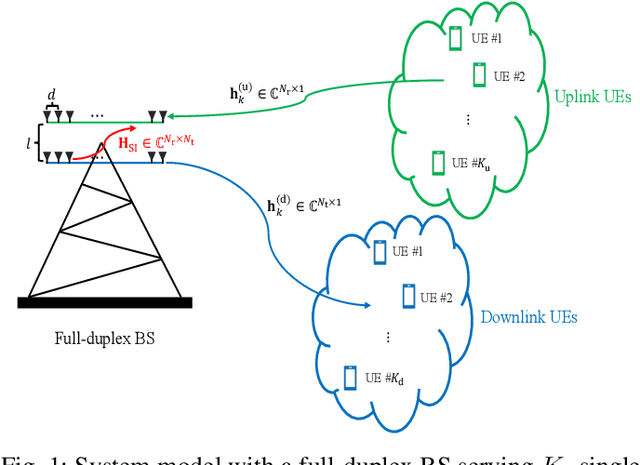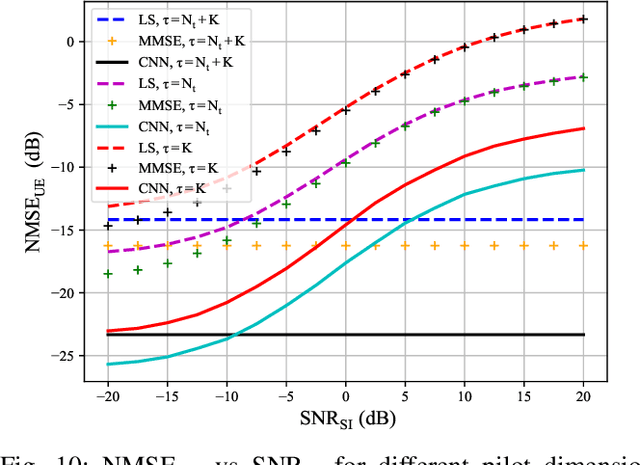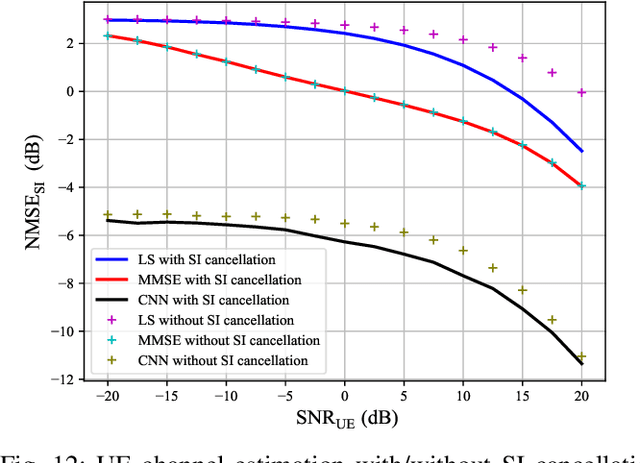Tommy Svensson
Chalmers University of Technology
Site-Specific Outdoor Propagation Assessment and Ray-Tracing Analysis for Wireless Digital Twins
Oct 18, 2024Abstract:Digital twinning is becoming increasingly vital in the design and real-time control of future wireless networks by providing precise cost-effective simulations, predictive insights, and real-time data integration. This paper explores the application of digital twinning in optimizing wireless communication systems within urban environments, where building arrangements can critically impact network performances. We develop a digital twin platform to simulate and analyze how factors such as building positioning, base station placement, and antenna design influence wireless propagation. The ray-tracing software package of Matlab is compared with Remcom Wireless InSite. Using a realistic radiation pattern of a base transceiver station (BTS) antenna, ray tracing simulations for signal propagation and interactions in urban landscapes are then extensively examined. By analyzing radio heat maps alongside antenna patterns, we gain valuable insights into optimizing wireless deployment strategies. This study highlights the potential of digital twinning as a critical tool for urban planners and network engineers.
On the Spectral Efficiency of Movable and Rotary Access Points under Rician Fading
Aug 15, 2024Abstract:Multi-User Multiple-Input Multiple-Output (MU-MIMO) is a pivotal technology in present-day wireless communication systems. In such systems, a base station or Access Point (AP) is equipped with multiple antenna elements and serves multiple active devices simultaneously. Nevertheless, most of the works evaluating the performance of MU-MIMO systems consider APs with static antenna arrays, that is, without any movement capability. Recently, the idea of APs and antenna arrays that are able to move have gained traction among the research community. Many works evaluate the communications performance of antenna systems able to move on the horizontal plane. However, such APs require a very bulky, complex and expensive movement system. In this work, we propose a simpler and cheaper alternative: the utilization of rotary APs, i.e. APs that can rotate. We also analyze the performance of a system in which the AP is able to both move and rotate. The movements and/or rotations of the APs are computed in order to maximize the mean per-user achievable spectral efficiency, based on estimates of the locations of the active devices and using particle swarm optimization. We adopt a spatially correlated Rician fading channel model, and evaluate the resulting optimized performance of the different setups in terms of mean per-user achievable spectral efficiencies. Our numerical results show that both the optimal rotations and movements of the APs can provide substantial performance gains when the line-of-sight components of the channel vectors are strong. Moreover, the simpler rotary APs can outperform the movable APs when their movement area is constrained.
Distributed MIMO Networks with Rotary ULAs for Indoor Scenarios under Rician Fading
Jun 27, 2024Abstract:The Fifth-Generation (5G) wireless communications networks introduced native support for Machine-Type Communications (MTC) use cases. Nevertheless, current 5G networks cannot fully meet the very stringent requirements regarding latency, reliability, and number of connected devices of most MTC use cases. Industry and academia have been working on the evolution from 5G to Sixth Generation (6G) networks. One of the main novelties is adopting Distributed Multiple-Input Multiple-Output (D-MIMO) networks. However, most works studying D-MIMO consider antenna arrays with no movement capabilities, even though some recent works have shown that this could bring substantial performance improvements. In this work, we propose the utilization of Access Points (APs) equipped with Rotary Uniform Linear Arrays (RULAs) for this purpose. Considering a spatially correlated Rician fading model, the optimal angular position of the RULAs is jointly computed by the central processing unit using particle swarm optimization as a function of the position of the active devices. Considering the impact of imperfect positioning estimates, our numerical results show that the RULAs's optimal rotation brings substantial performance gains in terms of mean per-user spectral efficiency. The improvement grows with the strength of the line-of-sight components of the channel vectors. Given the total number of antenna elements, we study the trade-off between the number of APs and the number of antenna elements per AP, revealing an optimal number of APs for the cases of APs equipped with static ULAs and RULAs.
Integrated Communication, Localization, and Sensing in 6G D-MIMO Networks
Mar 28, 2024



Abstract:Future generations of mobile networks call for concurrent sensing and communication functionalities in the same hardware and/or spectrum. Compared to communication, sensing services often suffer from limited coverage, due to the high path loss of the reflected signal and the increased infrastructure requirements. To provide a more uniform quality of service, distributed multiple input multiple output (D-MIMO) systems deploy a large number of distributed nodes and efficiently control them, making distributed integrated sensing and communications (ISAC) possible. In this paper, we investigate ISAC in D-MIMO through the lens of different design architectures and deployments, revealing both conflicts and synergies. In addition, simulation and demonstration results reveal both opportunities and challenges towards the implementation of ISAC in D-MIMO.
On the Spectral Efficiency of Indoor Wireless Networks with a Rotary Uniform Linear Array
Feb 08, 2024Abstract:Contemporary wireless communication systems rely on Multi-User Multiple-Input Multiple-Output (MU-MIMO) techniques. In such systems, each Access Point (AP) is equipped with multiple antenna elements and serves multiple devices simultaneously. Notably, traditional systems utilize fixed antennas, i.e., antennas without any movement capabilities, while the idea of movable antennas has recently gained traction among the research community. By moving in a confined region, movable antennas are able to exploit the wireless channel variation in the continuous domain. This additional degree of freedom may enhance the quality of the wireless links, and consequently the communication performance. However, movable antennas for MU-MIMO proposed in the literature are complex, bulky, expensive and present a high power consumption. In this paper, we propose an alternative to such systems that has lower complexity and lower cost. More specifically, we propose the incorporation of rotation capabilities to APs equipped with Uniform Linear Arrays (ULAs) of antennas. We consider the uplink of an indoor scenario where the AP serves multiple devices simultaneously. The optimal rotation of the ULA is computed based on estimates of the positions of the active devices and aiming at maximizing the per-user mean achievable Spectral Efficiency (SE). Adopting a spatially correlated Rician channel model, our numerical results show that the rotation capabilities of the AP can bring substantial improvements in the SE in scenarios where the line-of-sight component of the channel vectors is strong. Moreover, our proposed system is robust against imperfect positioning estimates.
Full-Duplex Millimeter Wave MIMO Channel Estimation: A Neural Network Approach
Feb 06, 2024



Abstract:Millimeter wave (mmWave) multiple-input-multi-output (MIMO) is now a reality with great potential for further improvement. We study full-duplex transmissions as an effective way to improve mmWave MIMO systems. Compared to half-duplex systems, full-duplex transmissions may offer higher data rates and lower latency. However, full-duplex transmission is hindered by self-interference (SI) at the receive antennas, and SI channel estimation becomes a crucial step to make the full-duplex systems feasible. In this paper, we address the problem of channel estimation in full-duplex mmWave MIMO systems using neural networks (NNs). Our approach involves sharing pilot resources between user equipments (UEs) and transmit antennas at the base station (BS), aiming to reduce the pilot overhead in full-duplex systems and to achieve a comparable level to that of a half-duplex system. Additionally, in the case of separate antenna configurations in a full-duplex BS, providing channel estimates of transmit antenna (TX) arrays to the downlink UEs poses another challenge, as the TX arrays are not capable of receiving pilot signals. To address this, we employ an NN to map the channel from the downlink UEs to the receive antenna (RX) arrays to the channel from the TX arrays to the downlink UEs. We further elaborate on how NNs perform the estimation with different architectures, (e.g., different numbers of hidden layers), the introduction of non-linear distortion (e.g., with a 1-bit analog-to-digital converter (ADC)), and different channel conditions (e.g., low-correlated and high-correlated channels). Our work provides novel insights into NN-based channel estimators.
Near-Far Field Channel Modeling for Holographic MIMO Using Expectation-Maximization Methods
Jan 15, 2024Abstract:Holographic Multiple-Input Multiple-Output (HMIMO), which densely integrates numerous antennas into a limited space, is anticipated to provide higher rates for future 6G wireless communications. The increase in antenna aperture size makes the near-field region enlarge, causing some users to be located in the near-field region. Thus, we are facing a hybrid near-field and far-field communication problem, where conventional far-field modeling methods may not work well. In this paper, we propose a near-far field channel model that does not presuppose whether each path is near-field or far-field, different from the existing work requiring the ratio of the number of near-field paths to that of far-field paths as prior knowledge. However, this gives rise to a new challenge for accurately modeling the channel, as conventional methods of obtaining channel model parameters are not applicable to this model. Therefore, we propose a new method, Expectation-Maximization (EM)-based Near-Far Field Channel Modeling, to obtain channel model parameters, which considers whether each path is near-field or far-field as a hidden variable, and optimizes the hidden variables and channel model parameters through an alternating iteration method. Simulation results show that our method is superior to conventional near-field and far-field algorithms in fitting the near-far field channel in terms of outage probability.
6G Positioning and Sensing Through the Lens of Sustainability, Inclusiveness, and Trustworthiness
Sep 24, 2023Abstract:6G promises a paradigm shift in which positioning and sensing are inherently integrated, enhancing not only the communication performance but also enabling location- and context-aware services. Historically, positioning and sensing have been viewed through the lens of cost and performance trade-offs, implying an escalated demand for resources, such as radio, physical, and computational resources, for improved performance. However, 6G goes beyond this traditional perspective to encompass a set of broader values, namely sustainability, inclusiveness, and trustworthiness. This paper aims to: (i) shed light on these important value indicators and their relationship with the conventional key performance indicators, and (ii) unveil the dual nature of 6G in relation to these key value indicators (i.e., ensuring operation according to the values and enabling services that affect the values).
Beamforming in Wireless Coded-Caching Systems
Sep 11, 2023Abstract:Increased capacity in the access network poses capacity challenges on the transport network due to the aggregated traffic. However, there are spatial and time correlation in the user data demands that could potentially be utilized. To that end, we investigate a wireless transport network architecture that integrates beamforming and coded-caching strategies. Especially, our proposed design entails a server with multiple antennas that broadcasts content to cache nodes responsible for serving users. Traditional caching methods face the limitation of relying on the individual memory with additional overhead. Hence, we develop an efficient genetic algorithm-based scheme for beam optimization in the coded-caching system. By exploiting the advantages of beamforming and coded-caching, the architecture achieves gains in terms of multicast opportunities, interference mitigation, and reduced peak backhaul traffic. A comparative analysis of this joint design with traditional, un-coded caching schemes is also conducted to assess the benefits of the proposed approach. Additionally, we examine the impact of various buffering and decoding methods on the performance of the coded-caching scheme. Our findings suggest that proper beamforming is useful in enhancing the effectiveness of the coded-caching technique, resulting in significant reduction in peak backhaul traffic.
Waveforms for sub-THz 6G: Design Guidelines
Jun 15, 2023



Abstract:The projected sub-THz (100 - 300 GHz) part of the upcoming 6G standard will require a careful design of the waveform and choice of slot structure. Not only that the design of the physical layer for 6G will be driven by ambitious system performance requirements, but also hardware limitations, specific to sub-THz frequencies, pose a fundamental design constraint for the waveform. In this contribution, general guidelines for the waveform design are given, together with a non-exhaustive list of exemplary waveforms that can be used to meet the design requirements.
 Add to Chrome
Add to Chrome Add to Firefox
Add to Firefox Add to Edge
Add to Edge